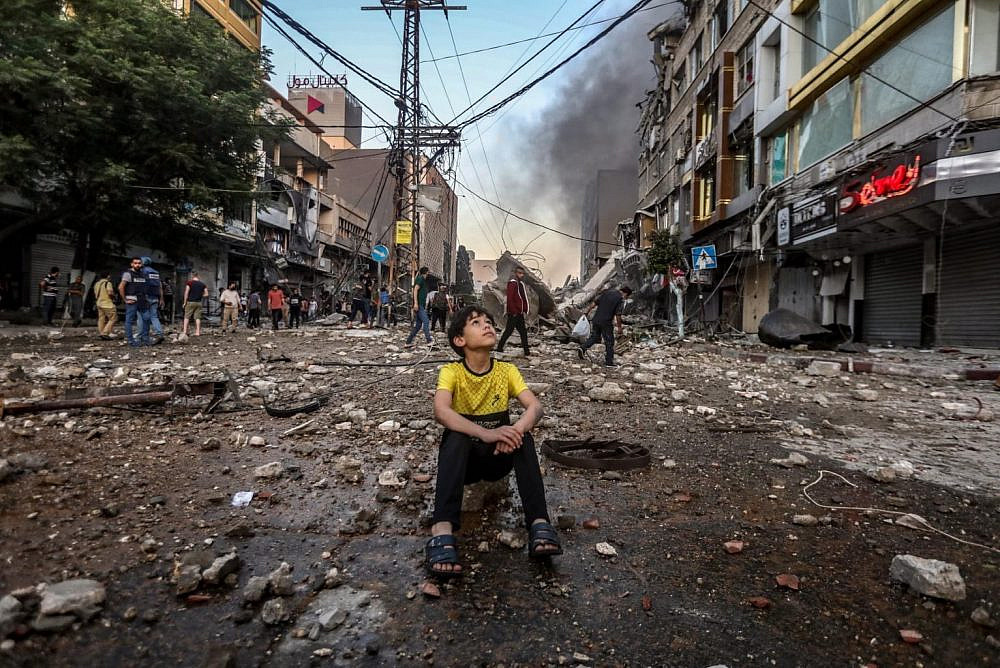Surviving the Siege: Exploring the Humanitarian Crisis and Hunger Challenges in Gaza
By: Maida Irshad
Gaza is currently experiencing the worst hunger crisis on record. This is a completely man-made disaster brought on by Israel’s continuous incidents and bombardment of the area, which is starving its civilian population. Horrifying scenes can be seen in Gaza, where the majority of families now go entire days without eating at all, desperate children roam the streets littered with rubble, looking for any scraps of food to eat, and malnourished newborns are dying from disease and starvation. In an attempt to give their kids a few mouthfuls, parents are going without food, but the rate of malnutrition is rising.
The most vulnerable to malnutrition are young children, expectant mothers, and nursing mothers; however, at the moment, nearly all Gazans are experiencing hunger and severe food insecurity. Israeli attacks on Gaza’s roads, which are used to deliver humanitarian aid, have damaged regional pastry shops and food warehouses since the beginning of October. Food, water, and fuel cannot enter the enclave in the initial place due to Israel’s complete blockade. People are starving, children are hungry and are searching for something to eat, women who are expecting are forced to abort the babies because of the situation currently going on. Having nothing to eat or drink, now people are dying because of the starvation. They are eating grass, herbs because of hunger. Families are searching for food not for themselves but to feed their children.
According to IPC (Integrated Food Security Phase Classification) report, more than 90% of Gaza’s 2.3 million population is facing high levels of acute food insecurity. 2.08 million people in Gaza are experiencing “acute food insecurity,” which is categorized as falling into phase three of risk or higher according to the IPC, an organization that assesses hunger risks. This information was also released on Thursday.
Families in the Gaza Strip have had to deal with food that is getting less nutritious and in larger quantities, as well as the inability to prepare meals because of fuel shortages. Compared to at least 10,000 trucks prior to the war, the quantity of food-carrying trucks that specified Gaza in a given month has decreased by more than half since October 7. The WFP reported on December 6 that in two months of fighting, only 1,249 trucks carrying food assistance made it to Gaza. It was also reported by the UN Office for the Coordination of Humanitarian Affairs that during the first seventy days of the conflict, only ten percent of the food required for the entire population of Gaza reached the enclave.
By February, up to 500,000 families might experience conditions akin to a famine. In the upcoming weeks, it is anticipated that no Gaza household will be able to meet its food needs. Famine, the most severe and disastrous form of food insecurity, affects nearly one in four households.
In the Gaza Strip, the Israeli government is waging war on civilians by starving them to death. Israeli forces’ military actions in Gaza are a reflection of public declarations made by Israeli officials that they want to deny fuel, food, and water to civilians living there. The Israeli government ought to refrain from targeting infrastructure that is essential to the civilian population’s survival, remove the military occupation of the Gaza Strip, and turn on the water and electricity.
The health and general well-being of Gaza’s population suffer as a result of their lack of access to wholesome food. The rates of malnutrition, especially in children, are startlingly high. Persistent malnutrition retards both cognitive and physical development, which feeds the cycles of vulnerability and poverty. Additionally, deficiencies in micronutrients, like iron and vitamins, raise the risk of illness and reduce resistance to disease outbreaks, like the recent COVID-19 pandemic. Alarming instances of malnutrition have been caused by a lack of access to a variety of nutrient-dense foods, especially for children. Long-term effects on an individual’s and a community’s health and well-being are caused by chronic malnutrition, which retards both physical and cognitive development. The situation is made worse by micronutrient deficiencies, which raise the risk of illness and lower resistance to disease outbreaks.
The public health implications of the hunger crisis in Gaza and Palestine are significant. Immune systems are weakened by malnutrition, leaving people more vulnerable to illnesses and infections. Furthermore, a lack of access to necessary drugs and medical care exacerbates existing medical conditions, raising the rates of morbidity and mortality.
Gaza’s economy has been completely destroyed by the embargo and ongoing hostilities, resulting in extreme unemployment and poverty. Food, housing, and medical care are among the most basic needs that many families find difficult to pay for. Food insecurity is made worse by the economic strain, which also prolongs cycles of vulnerability and impoverishment.
Millions of people in Gaza and Palestine are experiencing food insecurity, starvation, poor health conditions, economic hardship, and emotional trauma as a result of the hunger crisis, which has caused enormous suffering and humanitarian need. Reducing the population’s suffering and constructing a more viable and prosperous subsequent years for Gaza as well as Palestine require addressing the crisis’ underlying causes, which include the siege and ongoing hostilities.



